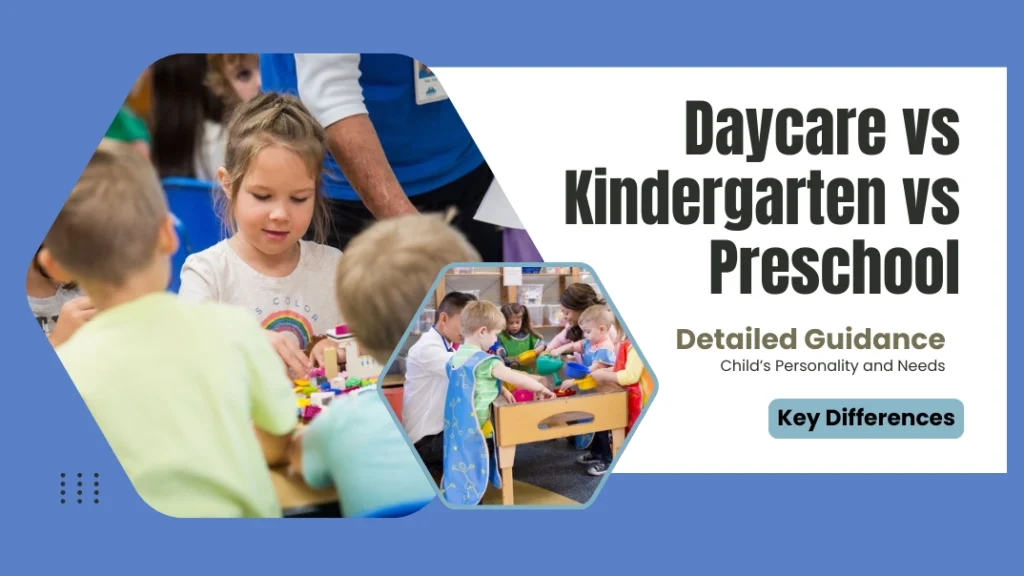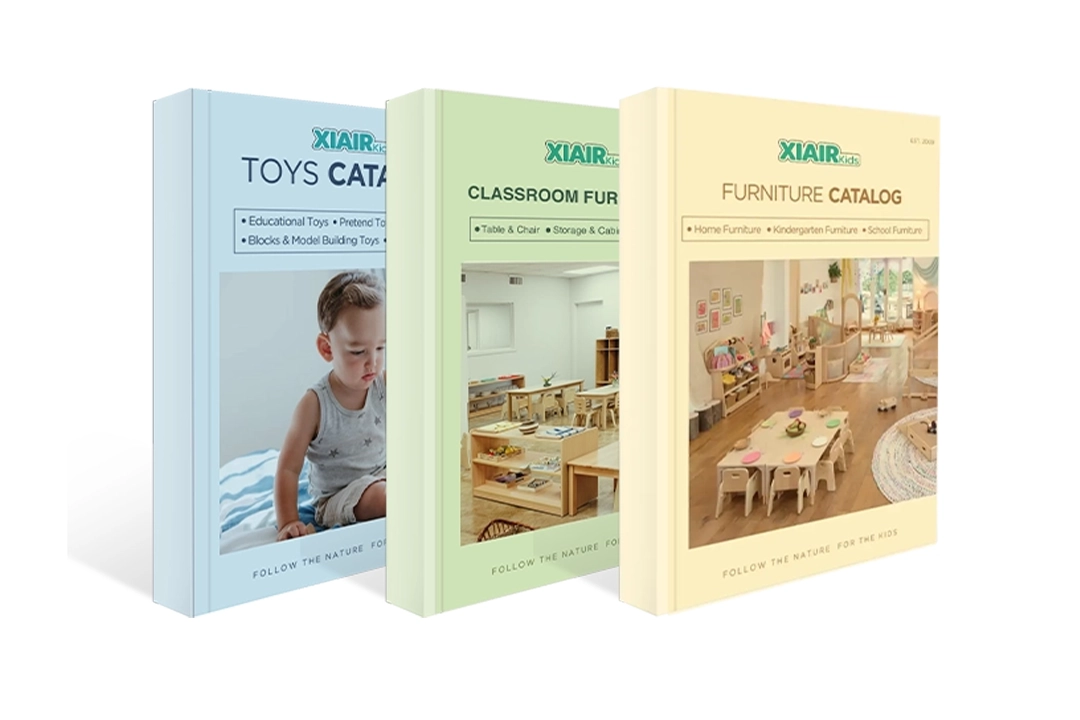“Early childhood education is the key to the betterment of society.” — Maria Montessori
Maria Montessori, one of the most influential educators of the 20th century, believed that the first years of life shape everything that comes after. Modern research confirms her insight: what children experience before age six has a lasting impact on their confidence, social skills, and school readiness.
No wonder parents often ask: Where does my child belong—daycare, preschool, or kindergarten? The terms sound similar, but each serves a unique role. Daycare provides reliable care and early socialization, preschool introduces structured play and learning, pre-kindergarten (pre-k) bridges the gap, and kindergarten marks the beginning of formal education.
This guide explains the differences between daycare vs kindergarten vs preschool, how pre-k fits into the picture, and how to choose the right stage at the right time for your child.
The Early Years Timeline
To understand how daycare, preschool, pre-k, and kindergarten connect, it helps to see them as a timeline of early childhood development:
- 0–2 years → Daycare (or crèche)
- 3–4 years → Preschool
- 4–5 years → Pre-K (Pre-Kindergarten)
- 5–6 years → Kindergarten
Each stage builds on the one before. Daycare nurtures safety and basic routines, preschool develops curiosity and social skills, pre-k introduces structured academics, and kindergarten starts formal schooling.
| Stage | Typical Age | Main Focus | Example Outcomes |
|---|---|---|---|
| Daycare (or Crèche) | 0–2 years | Care, safety, early socialization | Feels secure, plays with peers, adapts to group routines |
| Preschool | 3–4 years | Exploration, play-based learning, early academics | Recognizes numbers and shapes, learns to share, follows routines |
| Pre-Kindergarten | 4–5 years | School readiness, structured learning | Counts, writes their name, follows multi-step directions |
| Kindergarten | 5–6 years | Formal academics, independence | Reads simple words, adds and subtracts, works in groups |
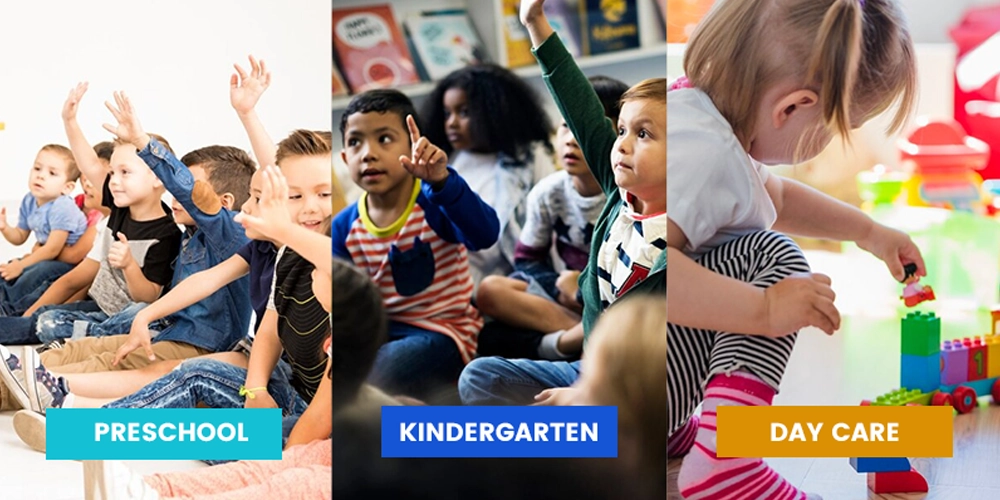
Daycare (Ages 0–4)
Daycare is often the first stop for families. It provides a safe and nurturing place for children while parents work. Most daycare centers accept infants as young as six weeks and may care for children until age four or five.
- Safety and supervision – ensuring children are fed, rested, and protected.
- Play and exploration – through toys, music, and outdoor activities.
- Basic routines – nap times, snack times, and group play.
- Social interaction – learning to be with peers in a group setting.
Crèche vs Daycare
In many parts of the world, especially Europe and Asia, the term crèche is used instead of daycare. A crèche typically focuses on infants and toddlers (0–3 years old) and may be located in workplaces, hospitals, or community centers.
- Crèche = childcare for babies and very young toddlers.
- Daycare = broader age range, sometimes up to age four or five.
A crèche is a type of daycare, but not all daycare is a crèche. Parents comparing crèche vs daycare should think about the child’s age and the level of developmental support needed.
Daycare is less about structured academics and more about providing reliable, flexible care for working families.
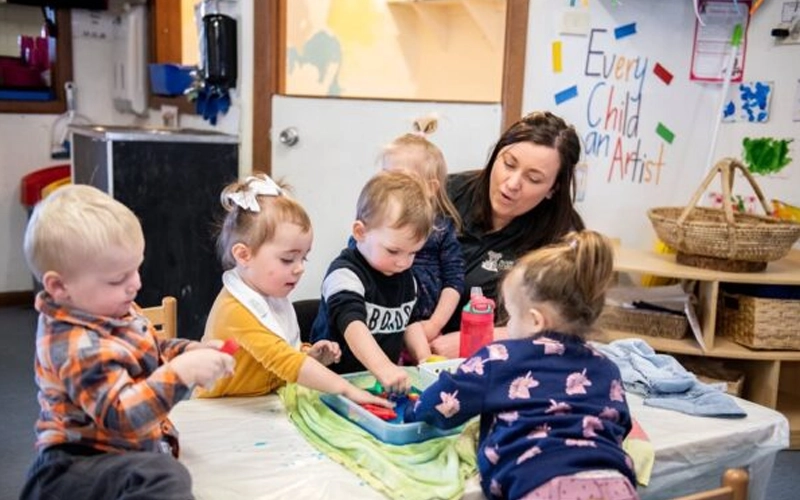
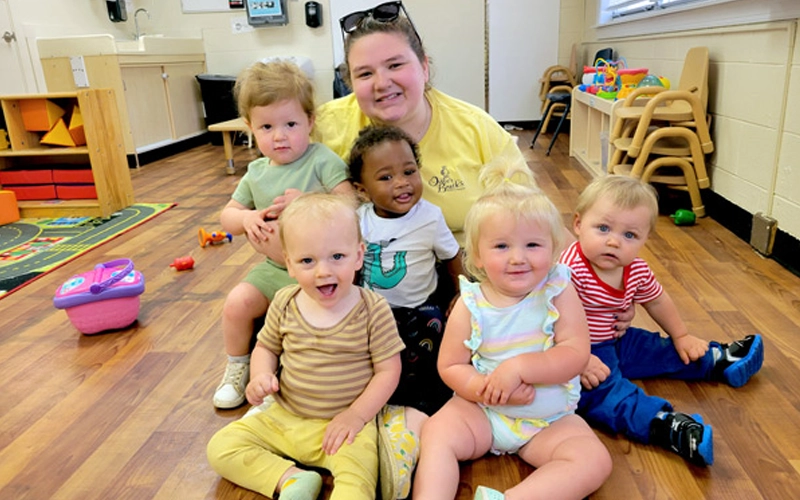
Preschool (Ages 3–4)
Preschool is usually the next step after daycare. Designed for children around ages 3–4, preschool introduces children to a more structured environment, though still heavily centered on play.
Key features of preschool include:
- Learning through play – painting, building blocks, dramatic play, and songs.
- Early academics – numbers, colors, shapes, and sometimes letters.
- Social-emotional growth – sharing, taking turns, following group routines.
- Routines – circle time, snack breaks, and short teacher-led lessons.
Preschool is the first time many children experience a classroom-like setting, but it remains flexible and exploratory. Parents searching for preschool vs kindergarten age should note: Preschool is ideal for 3- and 4-year-olds who are not yet ready for formal academics.

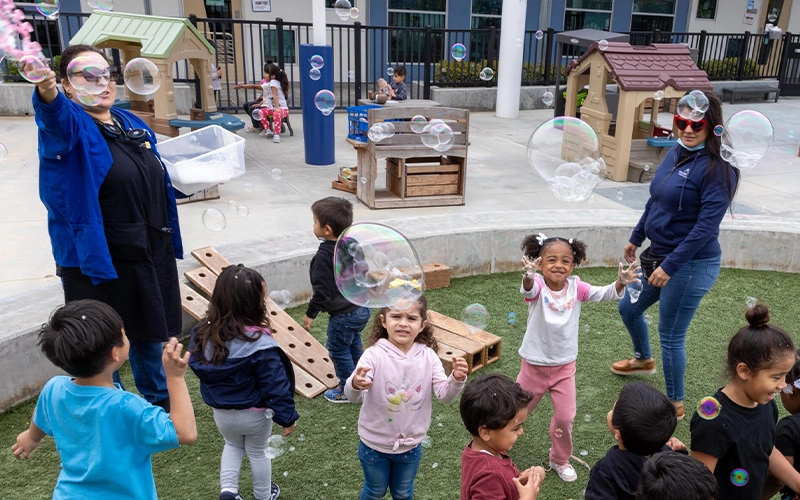
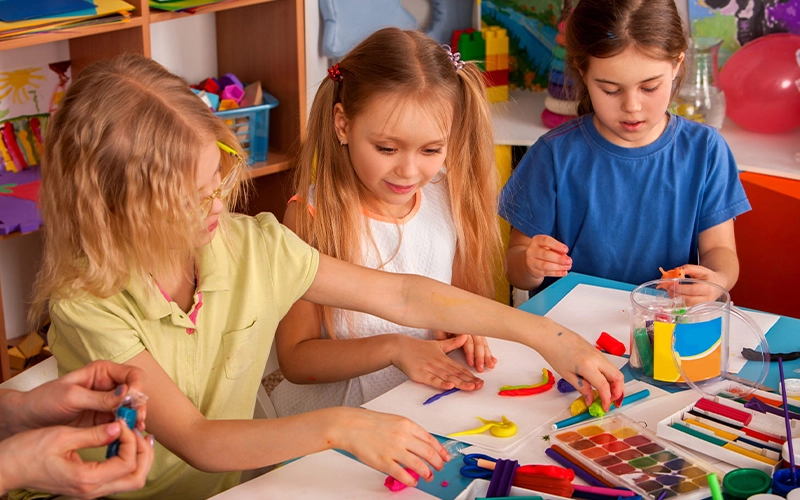
Pre-Kindergarten (Ages 4–5)
Pre-kindergarten, or pre-k, is the bridge between preschool and kindergarten. It serves 4- to 5-year-olds who are almost ready for formal school.
- More structured learning – literacy, numeracy, and early problem-solving.
- Longer lessons – children sit for story time, follow multi-step instructions, and work on group projects.
- Kindergarten readiness – practicing independence, responsibility, and routine.
- Signs of Readiness: Children can sit for 15–20 minutes, follow 2–3 step directions, recognize letters and numbers, and use the bathroom independently.
- Curriculum: Pre-k teachers introduce early literacy (phonics, writing names), math concepts (counting, patterns, shapes), and structured group projects.
Skipping pre-k may leave children underprepared for kindergarten’s academic pace. It gives kids a year to practice school-like routines in a supportive environment.
Pre-k ensures children don’t just enter kindergarten, but enter it prepared. Without this stage, some children may struggle with the shift from play-based learning to formal academics.
Kindergarten (Ages 5–6)
Kindergarten marks the official start of formal education. Typically for children aged 5–6, it introduces structured academic instruction while continuing to support social and emotional growth.
- Read and write simple words
- Understand basic math concepts like addition and subtraction
- Explore science and the world around them
- Learn teamwork and responsibility
- Academic Goals: Children learn to read simple books, write sentences, do basic math (addition, subtraction), and explore science topics like weather and animals.
- Social Growth: They develop responsibility (managing schoolwork), teamwork, and conflict resolution.
- Big Transition: Unlike preschool and pre-k, kindergarten has standards set by schools or states, making it the bridge to first grade.
Parents comparing preschool vs kindergarten age should note: preschool builds early social and learning skills at ages 3–4, while kindergarten formalizes education at ages 5–6.
Kindergarten is a major step up from preschool. Parents often search for kindergarten vs preschool vs daycare to understand the differences. The simplest way to put it: daycare provides care, preschool introduces learning, and kindergarten formalizes education.
What is Nursery
In many countries, especially the UK, Australia, and parts of Asia, the term nursery is used instead of preschool. Nursery usually begins around age 2–3 and focuses on play, socialization, and basic routines.
In the US and Canada, this stage is more often called preschool, while kindergarten refers to the first formal year of school (age 5–6).
Nursery = early preschool. Different name, same purpose: helping young children adjust to group settings and begin learning through play.

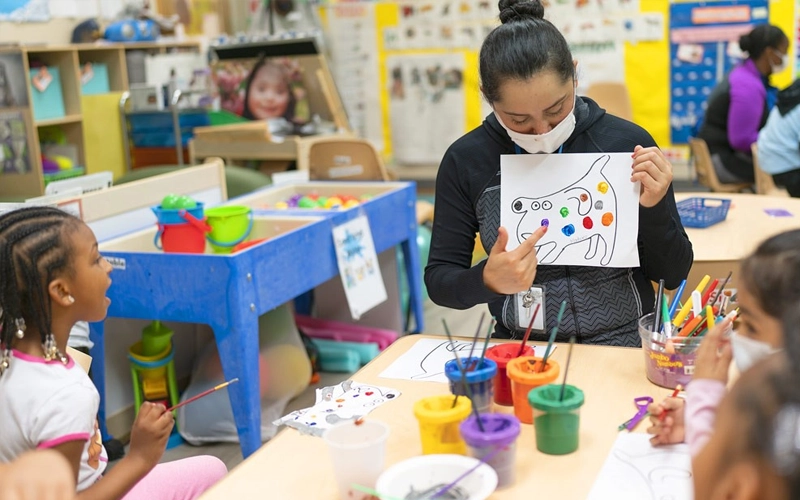
How the Stages Connect
The journey from daycare to preschool to pre-k to kindergarten is not about choosing one over the other, but about building skills step by step. Each stage lays the groundwork for the next:
- From Daycare to Preschool
In daycare, children develop comfort in group settings, learn routines like eating together and napping on schedule, and practice early social skills. By the time they are three, many are ready for preschool, where play becomes more intentional and connected to learning. - From Preschool to Pre-K
Preschool sparks curiosity through play and basic academics. But children at age four often need more structure. This is where pre-k steps in—offering longer lessons, group projects, and early literacy and math that build on what preschool started. - From Pre-K to Kindergarten
Pre-k children practice routines like sitting for circle time, following multi-step directions, and working independently. These skills are essential for the shift to kindergarten, where academic expectations increase and children are assessed on their progress in reading, writing, and math.
Each stage connects smoothly, not by repeating the same content, but by raising the level of expectation. Think of it as a ladder: daycare provides the first rung, preschool and pre-k build the middle steps, and kindergarten prepares children to climb confidently into elementary school.
Parent Decision Framework
Choosing between daycare, preschool, pre-k, and kindergarten is rarely a simple decision. Age is important, but it’s not the only factor. Parents should think across three areas: the child, the family, and the program.
1. Your Child’s Development
Is my child ready for the next stage?
- Social-Emotional Readiness – Can they separate from parents without distress? Do they play cooperatively?
- Independence Skills – Toilet trained? Able to manage snacks, jackets, or simple routines?
- Learning Readiness – Showing interest in letters, numbers, or storytelling? Able to sit and listen for short periods?
- Temperament – Some children thrive in structured settings, others need more time in flexible play environments.
2. Your Family’s Needs
What fits our daily life?
- Work Schedules – Do you need full-day coverage (daycare), or does a half-day preschool work?
- Budget – Preschool and pre-k may be subsidized, while daycare can be costly.
- Location – Proximity matters. A high-quality program too far from home may add stress.
- Philosophy – Does the program’s approach (Montessori, play-based, academic-focused) align with your family values?
3. The Program’s Quality
Does the program match what my child needs right now?
- Teacher Training – Do teachers specialize in early childhood education?
- Classroom Setup – Is it age-appropriate, safe, and stimulating?
- Curriculum Fit – Play-based for younger kids, more structured for older ones.
- Transition Support – Does the program prepare children for the next stage (e.g., preschool → pre-k → kindergarten)?
Decision-making isn’t about picking one label (“daycare vs kindergarten vs preschool”) but about aligning the child’s readiness, family needs, and program quality. The right choice is the one that creates the best fit across all three.

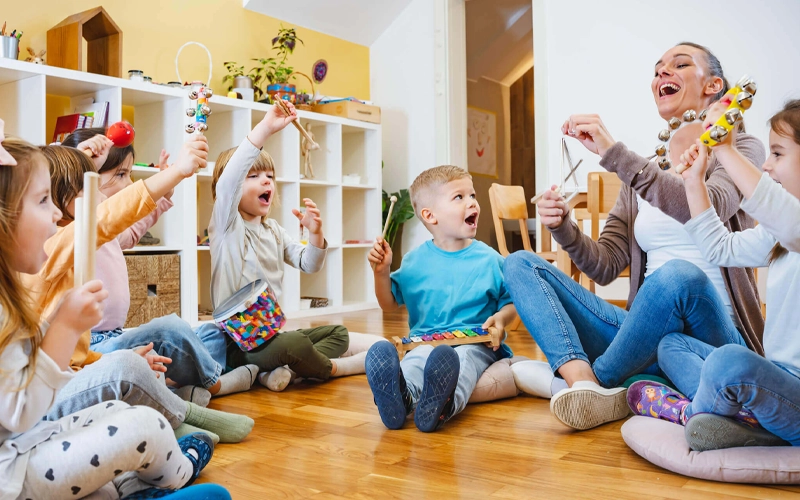
Why This Sequence Matters
The stages of daycare, preschool, pre-k, and kindergarten are designed to build on each other, but that doesn’t mean every child must follow the exact same path.
- For most children, moving step by step provides stability. Daycare offers care and early socialization, preschool adds structured play, pre-k introduces readiness skills, and kindergarten begins formal academics. This gradual progression helps many children feel confident at each stage.
- For some children, skipping a stage may still work. For example, a child who develops strong social and academic skills at home may go directly from home to preschool, or even from preschool into kindergarten without pre-k.
- The key is fit. The sequence exists because it reflects how children typically develop, but every child’s growth is unique. What matters most is placing them in an environment that matches their readiness—socially, emotionally, and academically.
The sequence matters as a framework, not a rulebook. Parents can use it as a guide while still honoring the individual needs of their child.
Conclusion
From daycare to preschool to pre-k to kindergarten, each stage supports children in a different way—moving from care and socialization, to playful learning, to readiness, and finally to formal schooling.
The key for parents is not deciding which stage is “better,” but knowing which stage fits their child’s age and development right now. Together, these steps create a smooth pathway from the earliest years to elementary school.
For a closer look at early childcare options, read [Daycare vs Preschool].
To understand the step between preschool and kindergarten, see [Preschool vs Pre K].
FAQs
What comes first: preschool or kindergarten?
Preschool usually comes before kindergarten. Preschool is for ages 3–4, while kindergarten begins around age 5–6.
Is pre-k required before kindergarten?
Pre-k is not mandatory, but it helps children adjust to the routines and academic expectations of kindergarten.
Can a child go from daycare straight to kindergarten?
Yes, but children may miss out on social and early academic experiences that preschool and pre-k provide. Many families choose at least one of these steps for smoother transitions.
What is the difference between nursery and preschool?
Nursery typically refers to early childhood care starting at age 2–3, while preschool is more structured and often begins around age 3–4.

